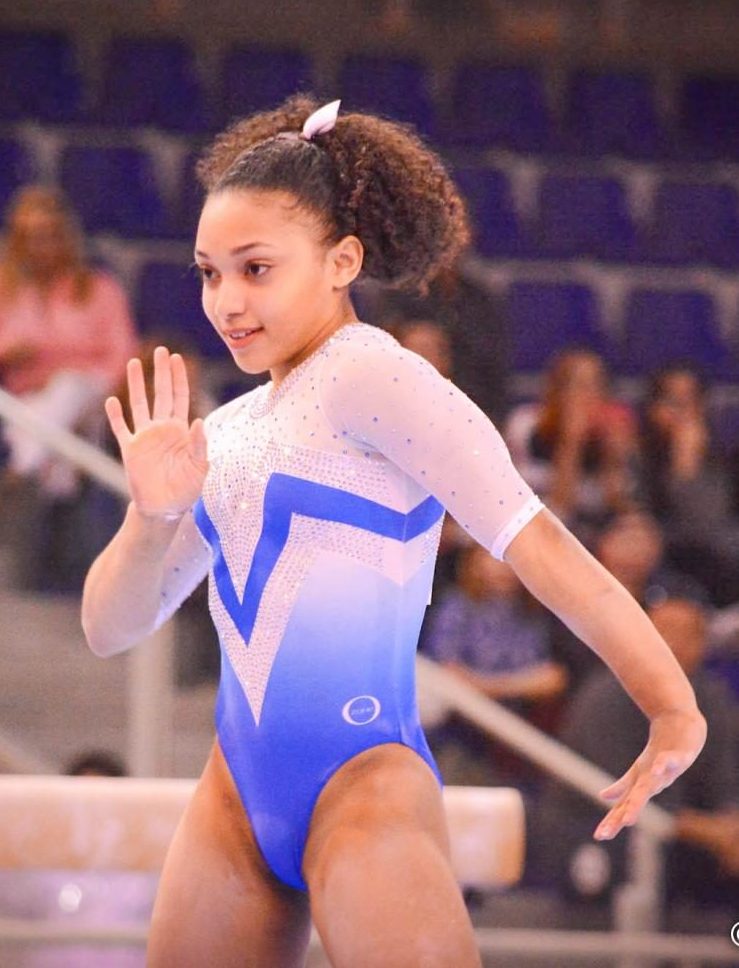Early climber
April 10, 2021

Sydney started gymnastics for the same reason most kids do — she was a daredevil. When Sydney started climbing up the kitchen cabinets, Carine knew that she needed to find a safer outlet for her daughter’s energy. After seeing a Groupon for a nearby gym, gymnastics seemed like the perfect solution.
In the first three days at the gym, Sydney fell completely in love with the sport. Less than a year after she started, she caught the attention of coaches and was asked to join her gym’s competitive team.
“They gave me a very quick assessment to see if I could really handle that, so I did a couple drills and they were like, ‘Yeah, she’s ready for level two,’” Sydney said.
The morning of one of Sydney’s first meets, she woke up with a bad stomach bug. She couldn’t keep any food down and was lethargic. Carine decided to let her go to the meet anyway to cheer on her teammates.
When Sydney got to the meet, her coach whisked her away before Carine could explain that she was sick, so 6-year-old Sydney decided to compete, despite having not eaten anything in the morning. She went on to win first place in the whole meet.
As time went on, Sydney never slowed down. According to Carine, Sydney’s performance and her dedication to the sport made it clear that gymnastics was more than just something to occupy her time.
“I realized how important it was to her,” Carine said, “So I was like, ‘Okay, we’ve got to start taking this a little more seriously.’”
Gymnastics is broken down into levels. Each level increases in difficulty and intensity, and gymnasts must meet specific score requirements to advance to the next level. Typically, gymnasts take about one year to complete each level, but Sydney moved at a significantly faster pace than usual, passing all 10 levels in under four years.
While the coaches worked with the gymnasts to teach them the skills they would need to progress, Sydney started to get bored shortly after starting competitive gymnastics. She found herself spending the majority of her time waiting for others to catch up rather than learning how to perform new skills. She had also started teaching herself advanced skills just by watching other gymnasts perform them, which set her apart from the other kids.
Carine said that one day, she was observing practice when a higher-level gymnast walked into the gym. Sydney watched what the older girl was doing and mimicked her flawlessly. The coaches turned and saw what she was doing and were amazed. Without any coaching, Sydney had taught herself how to do a kip. Kips are often considered to be one of the most difficult and frustrating skills to learn, and gymnasts frequently spend up to a year working to achieve them.
“[The coaches] were like, ‘Watch this, she just did a kip, that’s hard to do,’” Carine said. “So we realized, ‘Oh, okay, this is something special.’”
Sydney’s family recognized that she had potential and were willing to move halfway across the country to allow her to keep progressing through the levels.
After she completed level 10, the Barros family moved to Texas so 11-year-old Sydney could train at Texas Dreams, a rigorous gym known to produce some of the best gymnasts in the country. It is owned by Olympic medalist Kim Zmeskal.
“We felt like that would be the best place to go,” Sydney said.
According to Carine, people recommended that Sydney live in Texas with a host family so that the Barros family could stay in Georgia.
“I really appreciate that but I feel like it’s really difficult for me to just send her off to live with some other people,” Carine said.
Instead, Carine moved with Sydney into an apartment for the next year and a half, away from her dad who needed to stay in Georgia for work.
Last month, Sydney moved gyms again and now attends World Champions Centre, or WCC, in Spring, Texas. Olympic gold medalist Simone Biles, who is often considered the best gymnast to ever compete for the U.S., trained at WCC after her parents founded the gym.
In the gymnastics world, Texas Dreams and WCC are the ivy leagues.
To compete on the same level as some of the best gymnasts in the world, Sydney follows a strict daily schedule that combines rigorous training with all of the homework and other responsibilities that come along with being a sophomore in high school.
Every morning, Sydney wakes up at 6 a.m., throws on a gymnastics leotard, brushes her teeth and puts in her contacts. She walks downstairs, grabs a breakfast bar and heads out the door.
She spends the next 4.5 hours at the gym and an hour doing intense conditioning. After her workouts, she comes home to do school work virtually before her second gym session which lasts two hours. In total, Sydney spends 34 hours per week at the gym, working toward her ultimate goal of becoming an Olympic gymnast.
A normal school experience is just one of the many things Sydney’s had to give up for her gymnastics career. Because she spends so many hours at the gym and moves so frequently, Sydney has been homeschooled since was young.
She’s always been alone in her learning. She’s willing to sacrifice the normalcy of her life as a teenager for the chance to one day perform for millions of people in the Olympics.
Since LISD has embraced virtual learning, she’s gotten the opportunity to experience her sophomore year at Marcus. This year has been the first time in her high school experience that she has seen classmates.